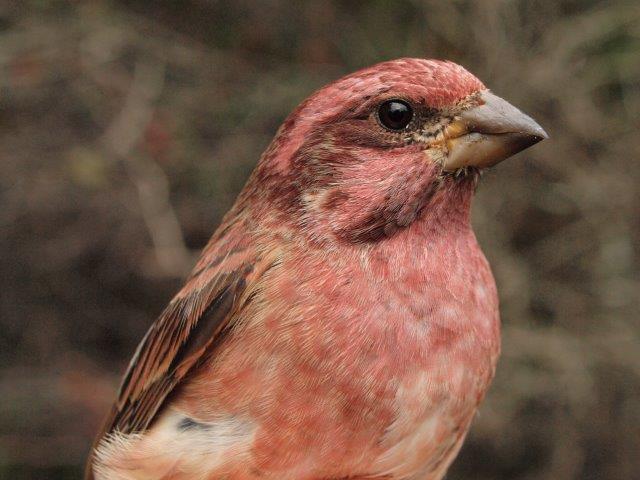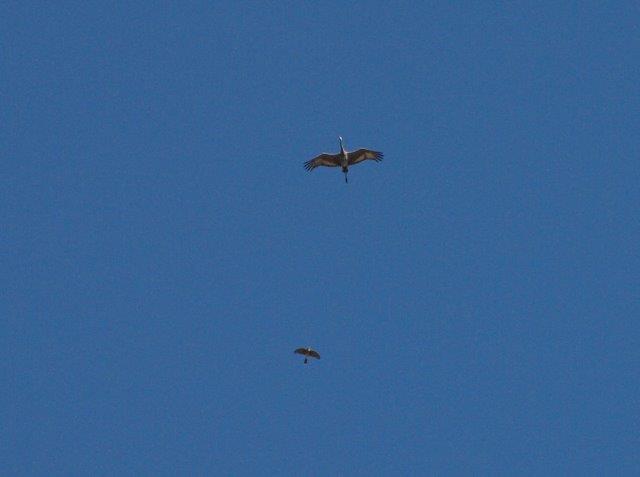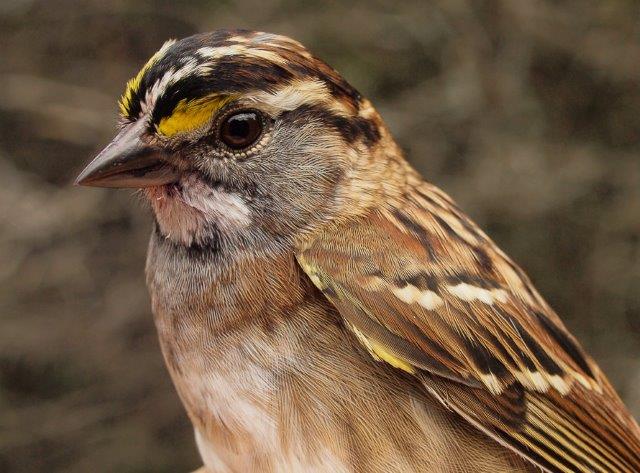Week 10 (October 3-9, 2015)
[
 It was a great week at MBO for Purple Finches, with 8 individuals banded, the most for a single week since fall 2012 (Photo by Simon Duval) ] |
| THIS WEEK | THIS FALL | 2006 TOTAL | SITE TOTAL | |
|---|---|---|---|---|
| # birds (and species) banded | 352 (28) | 2338 (75) | 3824 (86) | 57013 (119) |
| # birds (and species) repeat | 80 (14) | 533 (43) | 841 (60) | 11542 (85) |
| # birds (and species) return | 2 (2) | 51 (19) | 177 (34) | 1849 (51) |
| # species observed | 74 | 137 | 159 | 213 |
| # net hours | 476.0 | 5140.4 | 8630.7 | 11511.0 |
| # birds banded / 100 net hours | 73.9 | 45.5 | 44.2 | 51.0 |
Bander-in-charge: Simon Duval, Gay Gruner.
Assistants: Pascal Berthelot, Marc Boisvert, Zoe Bonerbo, Manon Bourdon, Alexander Boyer, Martha Bromby, Luke Currin, David Davey, Jean Demers, Katelyn Depot, Stéfany Desroches, Steve Dumont, Shannon Gailbraith, Alison Hackney, Lisa Keelty, Lorenzo Kleine, Marcel Lebeau, Barbara MacDuff, Francine Marcoux, Betsy McFarlane, Phillip Mercier, Anita Morales, Clémence Soulard, Rodger Titman, Christiane Tremblay, Jesse White.
Notes: After a record-quiet week 9, we were pleased to see migration pick up somewhat this week. Granted, the 352 birds banded is still somewhat below average for the period, it was more than twice as many as last week, and actually better than last year at the same time. The season total to date, however, remains the lowest since 2007, and it seems unlikely at this point that the pace of migration is going to change significantly over the final few weeks of fall. In terms of observations it was a somewhat above average week, with 74 species observed, bringing the season total to 137, a bit above the long-term average for week 10..

The highlight of the week was this Sandhill Crane flying over MBO, seemingly being escorted by a Cooper’s Hawk. It was only the fourth Sandhill Crane observed at MBO in 11 years, although the second sighting for 2015 (Photo by Simon Duval)
Although the fall banding list received no new additions this week, it was a productive period for observations, with three species new for the year (Herring and Great Black-backed Gulls, plus Northern Saw-whet Owl), and three more for this fall (Sandhill Crane, Eastern Bluebird, and Field Sparrow). We also added two species to our list of returns for 2015 – White-breasted Nuthatch and Nashville Warbler.
| # individuals banded | mean # individuals observed daily |
|---|---|
| 1. Ruby-crowned Kinglet (116) [3] | 1. Canada Goose (476) [1] |
| 2. White-throated Sparrow (88) [1 | 2. European Starling (317) [6] |
| 3. Yellow-rumped Warbler (24) [5] | 3. Common Grackle (187) [-] |
| 4. Slate-colored Junco (23) [4] | 4. American Robin (89) [5] |
| 5. Song Sparrow (21) [9] | 5. Red-winged Blackbird (82) [8] |
| 6. American Robin (15) [-] | 6. White-throated Sparrow (68) [4] |
| 7. Golden-crowned Kinglet (10) [8] | 7. Ruby-crowned Kinglet (45) [-] |
| 8. Purple Finch (8) [-] | 8. American Crow (45) [3] |
| 9. Swainson’s Thrush (6) [6 | 9. Blue Jay (30) [2] |
| 9. White-crowned Sparrow (6) [-] | 10. Yellow-rumped Warbler (26) [9] |
As the table above clearly indicates, this week’s banding totals were largely driven by two species. Week 10 is the traditional peak of migration for both Ruby-crowned Kinglet and White-throated Sparrow, and both showed up in close to average numbers this year. The 116 kinglets banded was just one more than the average of 115 during week 10 over the previous ten years, while the sparrows were 10% above the long-term average of 80 banded in week 10. The next tier of abundance this week was shared by Yellow-rumped Warbler, Slate-colored Junco, and Song Sparrow, all also commonly among the top ten in week 10 (11 years straight in the top five for the warbler, 11 in the top ten for the sparrow, and 10 in the top ten for the junco). American Robin is only sometimes in the top ten this early in October, so perhaps this is an omen of oncoming numbers. Despite a strong start to the season, Golden-crowned Kinglet numbers are now somewhat lower than normal. On the other hand, the 8 Purple Finches banded this week is the fourth highest weekly total in MBO’s history (the three higher counts were all in fall 2012). This year’s remarkably strong Swainson’s Thrush migration is tapering off further, but another 6 were banded this year, bringing the season total to 171 (just a bit short of the record of 176 in 2012, but already more than quadruple the long-term fall mean total of 38). Although White-crowned Sparrow squeaked into the top ten, the count this week was less than half the long-term mean of 16 for week 10, and overall the species has seemed unusually scarce so far this fall.
Canada Goose numbers increased further this week, remaining the most abundant bird observed this week (as has been the case in week 10 every year except for 2012). Aside from them, black birds featured prominently, with European Starling, Common Grackle, and Red-winged Blackbird all among this week’s top five, and American Crow farther down the top ten. Most years one of the three smaller species is among the top five; only three times previously were two of them that abundant in the same year, and this marks the first time all three of them were that numerous at the same time. American Robin numbers are always building by this point in October, and the mean daily count this week of 89 was just a bit below average, with the range over the past ten years for week 10 being 62 to 154. The count of White-throated Sparrows this week was also very close to typical (68, compared to a ten-year mean of 71 per day during week 10), as was the case for Ruby-crowned Kinglet (45 vs. 44). Blue Jay migration remains strong, and we had a decent movement of Yellow-rumped Warblers, although certainly nothing like in some past years.
As for owling, it was a productive week, with 47 Northern Saw-whet Owls banded, well above the mean of 33 for this period over the past six years. The first night of the week was the only one without any captures; on all other nights at least three owls were banded, with a high of 19 on the night of October 7. Surprisingly given the number of owls banded this week there were no foreign recaptures, but we expect that with the peak of the season yet to come, there will be others to report soon.

Comments are closed